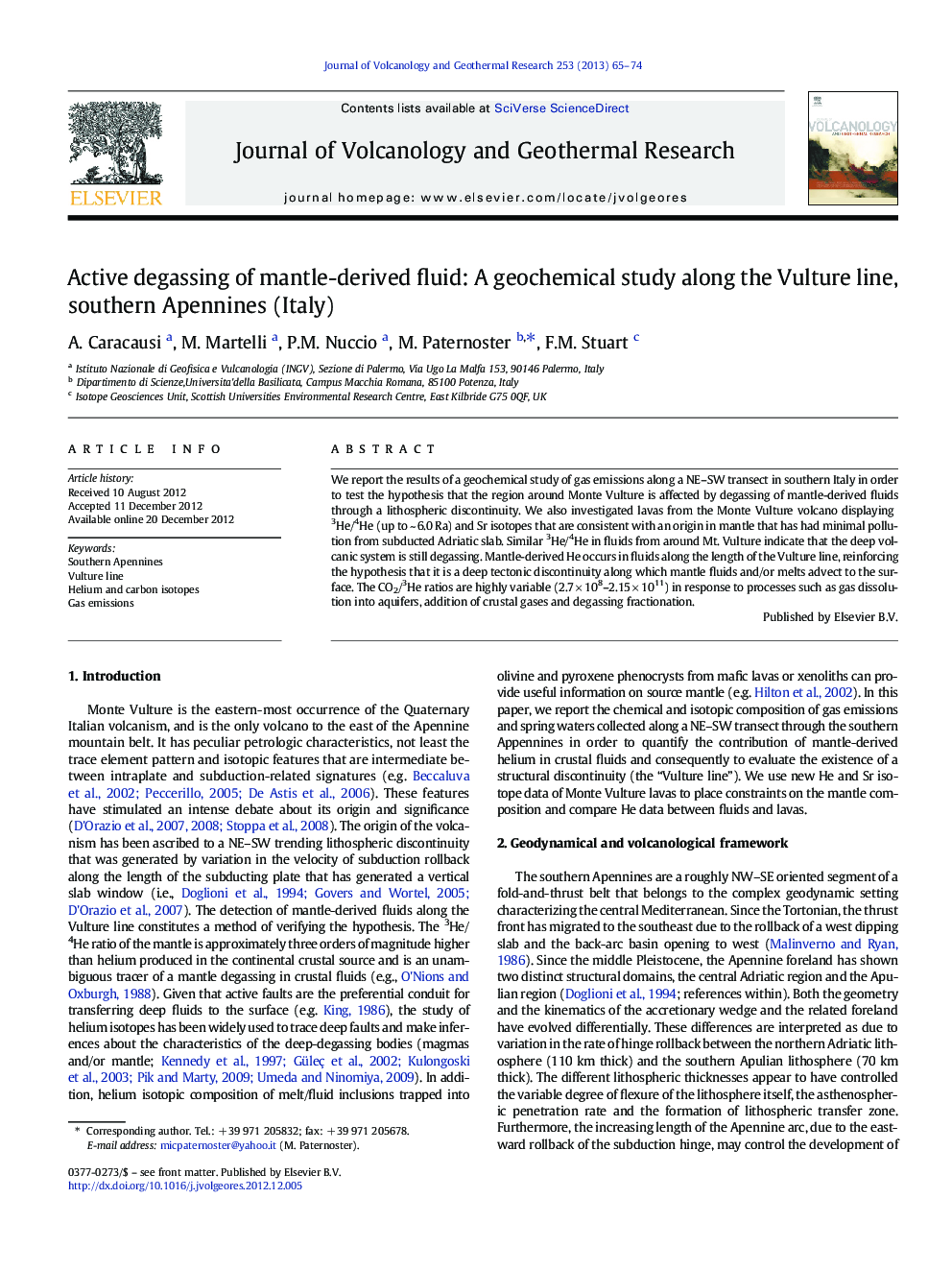| Article ID | Journal | Published Year | Pages | File Type |
|---|---|---|---|---|
| 4713469 | Journal of Volcanology and Geothermal Research | 2013 | 10 Pages |
We report the results of a geochemical study of gas emissions along a NE–SW transect in southern Italy in order to test the hypothesis that the region around Monte Vulture is affected by degassing of mantle-derived fluids through a lithospheric discontinuity. We also investigated lavas from the Monte Vulture volcano displaying 3He/4He (up to ~ 6.0 Ra) and Sr isotopes that are consistent with an origin in mantle that has had minimal pollution from subducted Adriatic slab. Similar 3He/4He in fluids from around Mt. Vulture indicate that the deep volcanic system is still degassing. Mantle-derived He occurs in fluids along the length of the Vulture line, reinforcing the hypothesis that it is a deep tectonic discontinuity along which mantle fluids and/or melts advect to the surface. The CO2/3He ratios are highly variable (2.7 × 108–2.15 × 1011) in response to processes such as gas dissolution into aquifers, addition of crustal gases and degassing fractionation.
► Lavas display 3He/4He (up to ~ 6.0 Ra) suggesting an origin in asthenospheric mantle. ► The measured mantle value is the highest of the Italian peninsular magmatism. ► Similar 3He/4He in fluids indicate that degassing of mantle-derived fluids is present. ► The degassing of mantle fluids along Vulture line is generated by a vertical slab. ► We underline the geodynamic analogies linking Mt. Vulture and Mt. Etna volcanoes.
